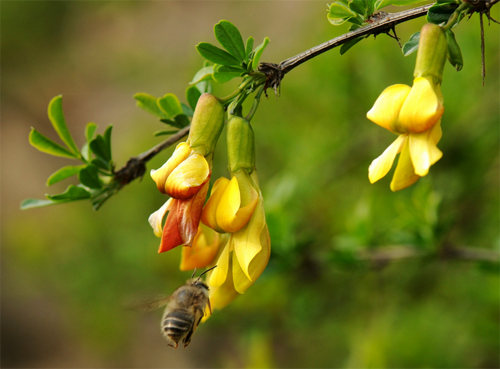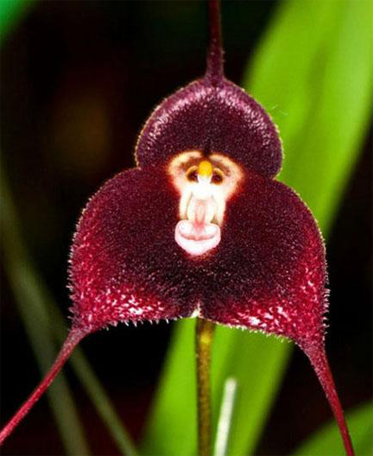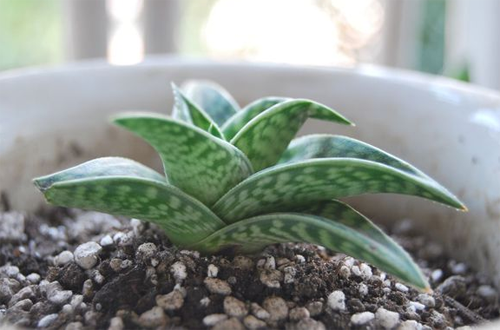What is the breeding method and breeding alias of broom?
Broom is a more common kind of flower, can be seen in many places, broom blooming yellow flowers, is very attractive, or fragrant, want to raise broom in their own home, what is the breeding method of broom? How do you reproduce? What's the alias?

Culture methods of broom:
1. Watering and fertilization
Broom is light-tolerant and drought-tolerant, just put it in a sunny and ventilated place. It is hardy in winter, and the south of the Yellow River can overwinter outdoors, so the basin can be buried in the soil.
Watering should grasp the principle of "no dry, no watering, watering thoroughly". The flowering period can be prolonged by keeping the potted soil moist.
During the dormant period in winter, liquid fertilizer can be applied once, liquid fertilizer before flowering, topdressing again after flowering, and usually an appropriate amount of thin fertilizer.
2. Pruning
Cut off the branches that affect the shape of the tree after defoliation in winter; cut the branches that have bloomed after flowering to promote the growth of new flower branches; in the peak period of growth, you can prune the long branches at any time and pick the heart properly, and its growth ability is strong.
3. Change the basin
Change the basin every 2 ~ 3 years in early spring, remove 1 pound and 2 old soil, replace fresh cultivated soil, trim root system, replant, place in astigmatism, water thoroughly, often spray water to rhizome, and return to dry and transparent watering after growing strong.
4. The advantages of broom
In the north as a forage grass, especially in the winter and spring world where the forage grass withered, its practicability is still very good, it has strong adaptability, drought tolerance, barren tolerance, and is not afraid of sand pressure. it is undoubtedly the best to prevent wind and fix sand, preserve soil and water and improve the ecological environment.
Its root system is well developed and can improve soil and water. Resistant to low temperature and extreme heat, resistant to low temperature of-39 ℃, and can grow normally when the surface temperature of sandy land is as high as 45 ℃ in summer.
The breeding method of broom:
Caragana can be propagated by sowing, cutting, ramet, striping and other methods, and the reproduction is simple.
1. Sowing seeds
It is best to sow seeds with picking, such as dry storage, soaking seeds before sowing in the following spring (soaking for 7 hours at room temperature for 8 hours)
2. Cuttage
Caragana cuttings can be used for hardwood cuttings from February to March, or tender wood cuttings in the rainy season. The cuttings are cut into 8cm and 12cm, with a depth of 1cm, shaded in a shed and properly watered. After rooting, they can fully receive light, grow healthily and have a high survival rate.
3. Ramet
Ramet propagation is carried out from February to March in spring.
What's the nickname of broom?
Yellow sparrow, yang sparrow, purple sparrow
It blossoms from April to May, the tail of the petals is slightly pointed, divided into two petals, like a sparrow stopping there, the color is golden, so it is named "broom".
Broom breeding and breeding methods are introduced here, come quickly to add some color to your home.
Pruning methods of broom
Broom cytisus scoparius
Alias broom, leguminous broom is evergreen or deciduous shrubs. Originally from Europe. There are evergreen and deciduous varieties. There are not many varieties. Courtyard cultivation-the plant height is kept below 2m. Pruning and cutting propagation are easy, but transplanting is slightly difficult.
Cultivation environment
Courtyard cultivation is suitable for warm areas and good sunshine. Like sandy loam with good drainage. It is not suitable for a wet place.
Potted plants can be planted in large pots with size 10 or above. It should be placed in a place with good sunshine for management.
Use earth only use red jade soil. (red jade soil is a kind of porous, granular volcanic soil, partial neutral.)
The time required for flowering the cuttings can blossom in 3-4 years from the beginning of planting.
The main reason for not blooming is lack of sunshine in ①. ② cut all the branches too short in autumn and winter.
The growth pattern of flower buds is from axillary buds of new shoots to flower buds from autumn to winter.

The basis of pruning
Pruning old branches and trunks where there are no branches will cause death and should be pruned above the branches.

Pruning method of courtyard cultivation a
Let it go. Unless unusually scattered or overstretched branches need to be trimmed.

Pruning methods for courtyard cultivation b
Cut off the new branches every 1 ~ 2 years to keep the compact plant type.

The common method of making bonsai of the golden finch gets its name because the golden flowers are shaped like birds that are about to fly. In addition, there are Caragana, Feilaifeng, finches, leopard whip and other aliases, which are deciduous shrubs of the genus Caragana Leguminosae. The plant is about 1.5 meters high, the iron black-brown trunk is erect and clustered, the slender branchlets are yellow-brown or gray, the long branches are drooping, the stems are spiny and the bark is filamentous. There are small leathery, dark green leaves on odd-pinnate leaves. One to two flowers are born in leaf axils, butterfly-shaped, yellow with blush, blooming from April to June.
The golden finch is distributed in the sunny slopes of the hills and mountains of the Yangtze River Basin and North China, and has been widely cultivated as a garden flower. The roots of the broom are Qiu qu and vigorous, the trunk is clank and iron, and the soft branches are easy to twist and tie. It is suitable for making bonsai in different forms, such as wind type, cliff type, jungle type, lifting root type, connecting root type, attached stone type, curved dry type, oblique dry type, double dry type and so on. The bonsai should be modeled according to the material, cut and cut, and combined with pulling and other methods, so that the bonsai produced is not only old and simple, but also lush and full of vitality. To reach the artistic realm that originates from nature and is higher than nature. Before entering the fine basin, the canary bonsai can be piled in a clay basin filled with clean sandy soil. After survival, the canary bonsai can be moved into the fine basin for viewing in the second or third year after preliminary modeling and root lifting. The pot and transplanting of the canary should be carried out before sprouting in spring. Before planting, the extra branches should be cut off, the torn and injured roots should be cut off, and the cut should be smooth. It is strictly forbidden to soak in water, otherwise the roots will rot and die after planting. Water the roots once after planting, and do not water them in the future. Unfolded plants should be kept in the leeward and sunny place after potting, and the ambient temperature should not be too high, so that the roots and leaves will grow, so as not to cause the plants to sprout prematurely and cause "false living" phenomenon because of the high temperature.
The methods of sowing, plant division, cutting, striping and so on are commonly used in the reproduction of canary. Suitable for sunny environment, resistant to drought and barren, but afraid of water and humidity and too shady environment. Its germination is very strong, growing rapidly, in the growing season to often pick the heart, which can not only make the leaves small, but also more buds, more flowering. Cut off the branches that are too long, too messy and affect the beauty of bonsai at any time. The plant is re-cut every spring before germination, cutting off weak branches, overgrown branches, dead branches and other branches that affect the shape. The canary is not afraid of the sun and does not need shade even in the height of summer. However, water retting roots, too much fertilization will make the leaves too large, affecting ornamental, so it is generally not necessary to apply additional fertilization, but 0.2% potassium dihydrogen phosphate can be sprayed to the leaves once when the bud is formed to prolong the flowering period. Spend the winter in a cool place indoors or in a sunny place outside. Turn the basin before sprouting every 3 years or so, and the basin soil should be sandy soil with medium fertility and good drainage.
- Prev

What is the breeding method and breeding price of monkey-faced orchids?
Monkey-faced orchids really look like monkeys, and have a monkey's tail. Keeping a monkey-faced orchid at home is like having a naughty animal at home. What are the breeding and breeding methods of monkey-faced orchids? What is the price of monkey-faced orchids? Culture method of Monkey-faced Orchid: pot soil selection
- Next

What is the name of the tree and its seed?
Cuihua palm looks like aloe vera, it is very attractive, at a glance in the past really thought it was aloe vera, Cuihua palm breeding methods and breeding methods is what kind of it? What's the alias? Cuihua palm cultivation method: watering and fertilization, spring, autumn and early summer is the vigorous period of plant growth
Related
- Fuxing push coffee new agricultural production and marketing class: lack of small-scale processing plants
- Jujube rice field leisure farm deep ploughing Yilan for five years to create a space for organic food and play
- Nongyu Farm-A trial of organic papaya for brave women with advanced technology
- Four points for attention in the prevention and control of diseases and insect pests of edible fungi
- How to add nutrient solution to Edible Fungi
- Is there any good way to control edible fungus mites?
- Open Inoculation Technology of Edible Fungi
- Is there any clever way to use fertilizer for edible fungus in winter?
- What agents are used to kill the pathogens of edible fungi in the mushroom shed?
- Rapid drying of Edible Fungi

